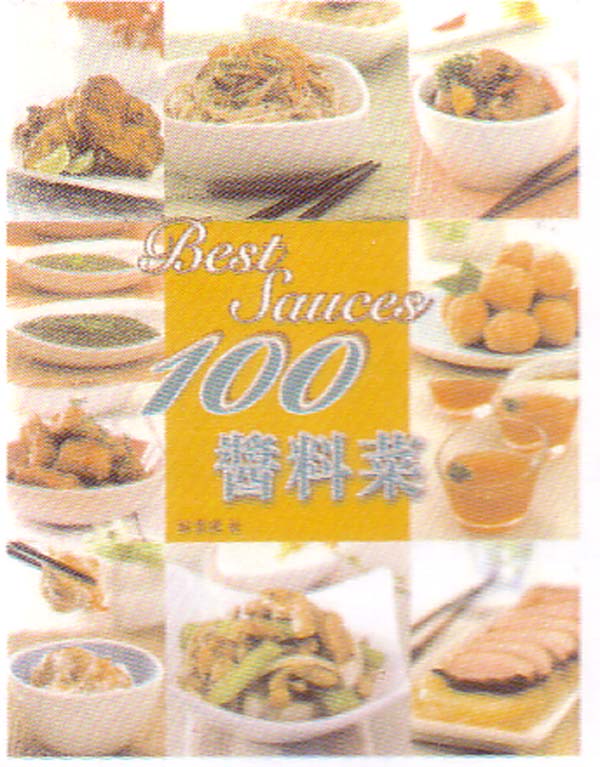
| What is Flavor and Fortune? |
| How do I subscribe? |
| How do I get past issues? |
| How do I advertise? |
| How do I contact the editor? |
Read 13146651 times
Connect me to:
| Home |
| Articles |
| Book reviews |
| Letters to the Editor |
| Newmans News and Notes |
| Recipes |
| Restaurant reviews |
| Article Index (all years, slow) |
| List of Article Years |
| Article Index (2026) |
| Article Index (last 2 years) |
| Things others say |
| Related Links |
| Log In... |
| Authors |
| Categories & Topics |
100 Best Sauces
by: Kitty Choi
Hong Kong China:
Hai Bin Book Company 2008, Hardbound
ISBN: 978-988-202-559-2
Reviewed by: Jacqueline M. Newman
Summer Volume: 2009 Issue: 16(2) page(s): 18
 Sauce, the author notes, is a magical potion and a key seasoning in the kitchen because it pleases taste buds, finishes off a dish, even improves it. Feeding the current trend of food without preservatives, and wanting readers to take control of mastering the art of making their own, forty-two basic and more complex sauces fill the pages along with fifty-nine recipes that use the very sauces made. Thus, one learns what is in these sauces, how to make them, and how to use them.
Sauce, the author notes, is a magical potion and a key seasoning in the kitchen because it pleases taste buds, finishes off a dish, even improves it. Feeding the current trend of food without preservatives, and wanting readers to take control of mastering the art of making their own, forty-two basic and more complex sauces fill the pages along with fifty-nine recipes that use the very sauces made. Thus, one learns what is in these sauces, how to make them, and how to use them.
Presented in sets, the sauces include sweet/sour, spicy, and savory items. Some are very simple as is Sweet Black Vinegar, Plum Sauce, Salted Lemon Paste, and Black Pepper Sauce. Others are less so including Red Curry Paste, Ma La Sauce with Dried Tangerine Peel, Oyster Sauce (which she calls Oyster Paste), and Shrimp Roe XO Sauce. Though a mite more complicated, all with the exception of the one with oysters, are easy to make and easy to store; in the refrigerator, of course.
We particularly like the 1-2-3-4-5 Sauce, the Chiuchow Sa Cha Sauce, and the Olive Black Bean Sauce with Dried Tangerine Peel. Some sauces do represent other Asian countries, though all are used by the Chinese who live in them or in China. Typical of these are Nonya Sauce and Korean BBQ Sauce.
Need to consume less salt, this book may meet that need, but not always. Nonetheless, there is much to learn in this volume, and we do recommend you use this book to learn what is in a sauce and how to use it. With that in mind, a sauce then a recipe to use it follows; and do note that very thick sauces are often known as pastes, as it the one below.
| Salted Lemon Paste |
|---|
1/2 pound salted lemon 1 fresh lemon for its juice and zest 6 Tablespoons white vinegar 1/2 pound white sugar Preparation: 1. Coarsely mince the salted lemons; and discard all pits. Put into a non-reactive pot such as an enamel one or one made of stainless steel. 2. In another pot, bring sugar and three tablespoons water to the boil; then pour this into the salted lemon mix, and stir in the lemon juice and the zest and return it to the boil, then reduce the heat and allow to cook until the mixture is very sticky, before setting it aside to cool. 3. Put into a glass jar and refrigerate until needed. |
| Duck with Young Ginger |
|---|
1 duck 2 Tablespoons dark soy sauce 2 Tablespoons vegetable rendered duck fat 1/4 pound young ginger 10 Tablespoons salted lemon paste 2 teaspoons grated garlic 1 teaspoon salt 2 Tablespoons vegetable oil 2 slices fresh ginger 1 large piece tangerine peel, soaked until soft 2 red chilies, cut in half, seeds removed and discarded 1 teaspoon chicken bouillon powder 1 teaspoon sesame oil 1 Tablespoon cornstarch Preparation: 1. Brush duck inside and out with soy sauce and set aside for half an hour. 2. Heat duck fat, and add young ginger and stir for one minute, turn off the heat and add the salted lemon paste and the grated garlic, and put this mixture inside the cavity of the duck. Close with a skewer. 3. Heat oil in a deep pot, add ginger slices tangerine peel, and the red chilies and stir-fry for one minute, then add four cups of water, stir, and put in the duck, cover, and simmer for forty minutes. 4. Remove and set aside the items in the duck, and return it to simmer until tender (about half an hour, then remove from the pot and cool. When cool, cut the duck into serving-size pieces and arrange them on a platter. 5. Put the reserved items and liquid into a pot, add any remaining sauce from the pot, add the sesame oil, and bring to the boil. 6. Mix cornstarch with two teaspoons cold water, stir this into the boiling sauce, and when thickened, pour over the duck, and serve. |

Copyright © 1994-2026 by ISACC, all rights reserved
Address
3 Jefferson Ferry Drive
S. Setauket NY 11720